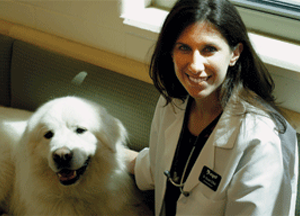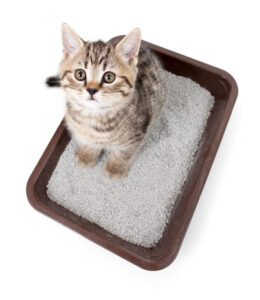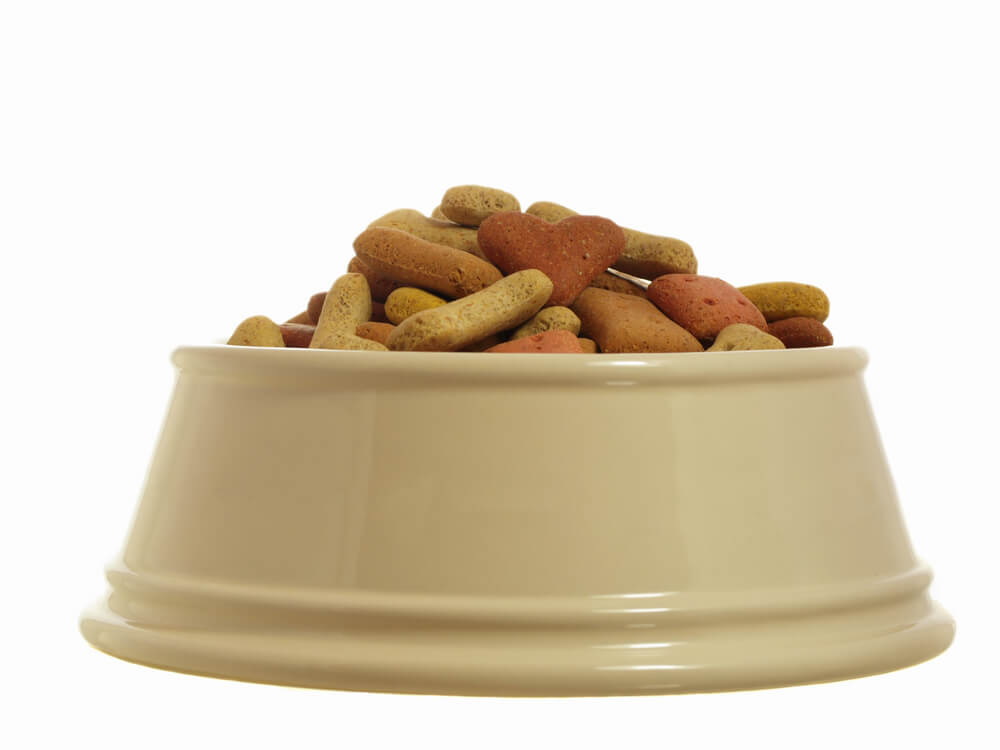-
Adopt
-
Veterinary Care
Services
Client Information
- What to Expect – Angell Boston
- Client Rights and Responsibilities
- Payments / Financial Assistance
- Pharmacy
- Client Policies
- Our Doctors
- Grief Support / Counseling
- Directions and Parking
- Helpful “How-to” Pet Care
Online Payments
Referrals
- Referral Forms/Contact
- Direct Connect
- Referring Veterinarian Portal
- Clinical Articles
- Partners in Care Newsletter
CE, Internships & Alumni Info
CE Seminar Schedule
Emergency: Boston
Emergency: Waltham
Poison Control Hotline
-
Programs & Resources
- Careers
-
Donate Now
 by Susan O’Bell, DVM, MPH, DACVIM
by Susan O’Bell, DVM, MPH, DACVIM
General Medicine, Angell Animal Medical Center
www.angell.org/generalmedicine
617-522-7282
The latest market research shows the staggering statistics of how much money Americans spend on their pets each year. While these billion dollar figures may seem shocking to some, the 60% of us who do own pets and love to reward them with new treats, toys and other “gear” are probably not all that surprised. As a pet owning, amazon.com-frequenting, general practitioner at Angell, I want to provide you with a guide to smart and savvy shopping for your dogs and cats. Before I begin, let me preface with a few comments:
This list is by no means exhaustive nor is it necessary for you to buy every item on the list. Common themes/questions come up during appointments with new and seasoned pet owners alike, and these led to the creation of this list. As with most things in life, you, your pet, your veterinarian, your trainer and/or behaviorist will all likely have strong personal opinions on what works best. Where it seemed necessary, I provided some commentary on why I selected items and/or why I would avoid some others.
Cat specific items:
From a medical standpoint, litter boxes and safe forms of environmental enrichment are the most important items for you to acquire for your cat (aside from food, water, and basic shelter).
Litter and litter boxes:
- Your preference might not align with your cat’s. Some cats might want privacy in which case an enclosed cat litter box is fine. But an open, shallow litter box in a private/low traffic area of the household may be preferable for many cats. I have seen litter boxes that require cats to jump in a hole in the top, or that rake the litter for you, or have ramps and proper doors on them (I think many of these are to keep any dog housemates from getting into the box!), but given the frequency with which cats present to the emergency room for inappropriate urination, simpler may be superior. Make the litter box easily accessible (can a little kitten, or an arthritic cat with some weakness get in and out of the box easily?).

- We recommend a “cat plus one” rule for number of litter boxes (if you have one cat, supply 2 boxes, 2 cats, supply 3 boxes).
- When it comes to cat litter, I am a fan of dust-free, clumping litter, but many cat owners seem to have a personal preference or assert that their cats show a preference – I would go with what your cat seems to like best. One thing of note, I am not a fan of crystal litters mostly because they seem very painful for cats to step on.
- Set yourself up for scooping success with a sturdy litter scoop and disposal system near the litter box to encourage you to scoop it at least once a day. Daily scooping reinforces good feline bathroom habits and helps prevent risk of disease transmission from feces left in the box.
Food/water bowls:
- For both cats and dogs I recommend stainless steel or ceramic dishes for food and water supply both for ease of
 cleanliness and because some plastics can result in a contact dermatitis (an allergic skin condition). Many of us recommend a “cat water fountain” as a creative way to encourage water consumption in cats as well as a form of environmental enrichment. (I think most or all feline water fountains are made out of plastic! In this instance what the product is actually made out of may be trumped by the enrichment factor).
cleanliness and because some plastics can result in a contact dermatitis (an allergic skin condition). Many of us recommend a “cat water fountain” as a creative way to encourage water consumption in cats as well as a form of environmental enrichment. (I think most or all feline water fountains are made out of plastic! In this instance what the product is actually made out of may be trumped by the enrichment factor).
Miscellaneous items:
- A perch or equivalent raised safe place
- A comfy, washable bed
- Toys are a great way to enrich your cat’s environment and to encourage exercise. Laser pointers are probably our number one recommended toy. “Cat dancers” are cheap and get the job done. Anything with feathers tends to have appeal as well, although make sure the toy cannot be consumed or easily fall apart, otherwise hide it when you are not at home to have supervised play sessions.
- Nail trimmers (I prefer the small scissor style)
- A durable/sturdy carrier for transport stored in a readily accessible place (in case of an emergency).
- Regarding collars/leashes, I don’t see many cats who wear them. Many cats scratch at them or manage to remove them. If you choose to put one on your cat, I would make sure it is a properly fitted, safety collar. Consider microchip placement as a more permanent form of identification. You may also consider purchasing a harness and leash for your cat for some supervised outdoor time.
DOGS
Collars/harnesses:
- I am a fan of lightweight collars for ID, rabies, and license tags and for wear around the house. For actual walks I prefer Gentle Leader head collars (made by Premier Pet Products) or a Puppia brand (or similar style) harness for smaller breed dogs. Another head collar to look into is a “Sporn” head collar (unfortunate name but it is a product behaviorists like). I do not recommend any sort of choke collar, prong collar, or really anything made out of metal. I recommend a harness for any dog with a history of neck pain, coughing, or a breed predisposition to intervertebral disk disease or respiratory issues (many “long backed” breeds such as Daschunds or Corgis, or “smoosh-nosed” breeds such as pugs, Boston terriers or bulldogs, respectively). I am surprised by how many people I see walking dogs with retractable leads. I always prefer a six foot, regular leash as the safest option to use for your dog whether on a walk around the neighborhood or certainly in high traffic areas (visit to the hospital or busy city streets, for example).
Beds/Crates:
- I recommend the use of crates to help with training and ensure a safe environment for new puppies. Without proper acclimation, a crate can be an anxiety-inducing or potentially unsafe environment for an older puppy or an adult dog with no prior crate experience (depending on the nature of the dog). Either way, I would recommend a safe, “dog-proofed” environment for your dog when they are at home or riding in the car.
- Provide your dog with a clean, comfortable bed. Personally I would try to find some sort of moisture-wicking/water-proof, machine washable cover. There are plenty of dog beds available, including memory foam options for older or arthritic pets. A lot of dogs seem to be fans of the raised, cot-style beds which allow air to circulate around them and also keep them off the hard floor. I would be wary of heated/electric beds due to risk of burns or fire hazards. Keep your pet in an environment suitable for a human to be kept comfortable and chances are they will be at the right temperature as well.
Nail trimmers:
- Whether for large or small breed dogs, I prefer scissor style trimmers (rather than “guillotine” style trimmers. Many people (and dogs?) are fans of dremel tools for nail trims (traditionally a wood-working tool to grind nails rather than cut them). You may want to purchase a small stash of styptic powder in case a nail begins to bleed. A dab of corn starch will also help stop a bleeding toe nail in a pinch.
Clothing/Sun protection:
- Not all dogs need clothes, and most can do without, but some breeds may benefit from a well-fitting coat on colder days. You may find that this increases the amount of time your dog wants to stay outside. Fair-haired breeds (think light colored Pit Bull or Boxer for example) may benefit from a t-shirt to help protect them from the sun. Make sure clothing is close-fitting but not restrictive or constricting. There are plenty of “fashion statement” articles of clothing available which really aren’t necessary, but do hold high entertainment value for your facebook friends. There is one dog-approved sunscreen, however you could also more readily obtain a barrier type sunscreen suitable for infants (such as California Baby sensitive skin) to use on ear tips and muzzles. Don’t forget about their bellies which can serve as a large target for sun reflecting off the hot sidewalk.
Toys/Environmental Enrichment:
- The toy we recommend often is a Kong that can be stuffed with peanut butter or other “long-lasting” treats to keep your dog busy and be part of your routine when you are leaving the house. Regardless of the brand of toy or its desired purpose, look for toys that are sturdy and well-made. Do a trial run under your supervision to see if it is truly indestructible. A few guidelines: avoid anything as hard as bones, and allow your dog access to edible chews (such as compressed dental chews, raw hide, etc) when you are home to supervise (in case your dog decides to try to eat too large a piece). Speaking of toys, many dog trainers would advise against letting your dog have free access to all of his or her toys. These are considered resources that they should have access to only with your permission. Also, (those of you with human children can likely relate!), somehow the toys seem more special if they don’t see them all the time! As I mentioned with the Kong, it can be particularly helpful to have a favorite toy, (especially if it can be combined with treats), as part of your routine whenever you need to be away from your dog. Lastly, here is a list of some food puzzles and toys that can hold up to some of the toughest chewers and smartest pups:
- Toys For Tough Chewers: Black Kong, Toughies Mega Ring, Big Mean Kitty, Wubba, Buster Cube, Everlasting Treat Ball, Orbee Tuff line, EGGe, GoughNuts
- Food Puzzles: Kong toy; Talk to me Treatball; Busy Buddy toy line (from Premier Pet Products); Everlasting Fun Ball & Everlasting Treat Ball; Buster Cube
Miscellaneous:
- I wouldn’t invest in “dog booties” unless they have been recommended for a medical reason (to cover a wound or otherwise sensitive, vulnerable skin or to provide traction to arthritic or neurologically impaired pets). Dogs rely heavily on their uncovered paws to maintain grip and proper balance. I would instead consider applying Musher’s Secret to paw pads during the winter months. This is a wax formulated product to protect paw pads.
- Every household should have a bottle of an enzymatic cleaner such as Nature’s Miracle to clean up accidents. The fragrance is non-offensive to pets and humans alike, and the formula is effective at breaking down urine and other stains.
- Geriatric needs: There are entire websites dedicated to products that may aid this population of pets and those of us caring for them. The most common reason I refer clients to these sites would be to obtain lift aids and other mobility devices to help support arthritic patients especially on stairs or in and out of cars. This can take a lot of strain off of your body as well as your dog’s and really help to expand their quality of life.
- Emergency Kit – I don’t think you need to have an extensive or expensive kit at home. If there is a true emergency, you should be heading to the nearest emergency facility. What I would always have available are:
- the number and location of the nearest emergency hospital
- the number for animal poison control (1-888-426-4435)
- some sort of gauze (any clean material will suffice in a pinch!) to apply pressure to a wound in case of bleeding
- a bottle of hydrogen peroxide
- Benadryl or its generic equivalent
- a muzzle (to protect you from a bite if your dog is in pain, for example).
NOTE: You should only use hydrogen peroxide or Benadryl under the advisement of a veterinary professional. There are some emergency situations when a veterinarian will recommend inducing emesis (vomiting) at home. So when time is of the essence, it could be helpful to already have hydrogen peroxide at hand. You should never administer medications or supplements, even those obtained without a prescription, without instructions from your veterinarian first.
Lastly, I did not include food/treats on this list. Please see our previous articles on navigating pet food aisles and/or be in touch with your veterinarian about specific food questions for your dog or cat. The choices can be overwhelming and your veterinary team has a wealth of knowledge about the best choices for your pet.
For information about Angell’s General Medicine service, please visit www.angell.org/generalmedicine or call 617-522-7282. Angell also offers Behavior services for cats www.angell.org/behavior.